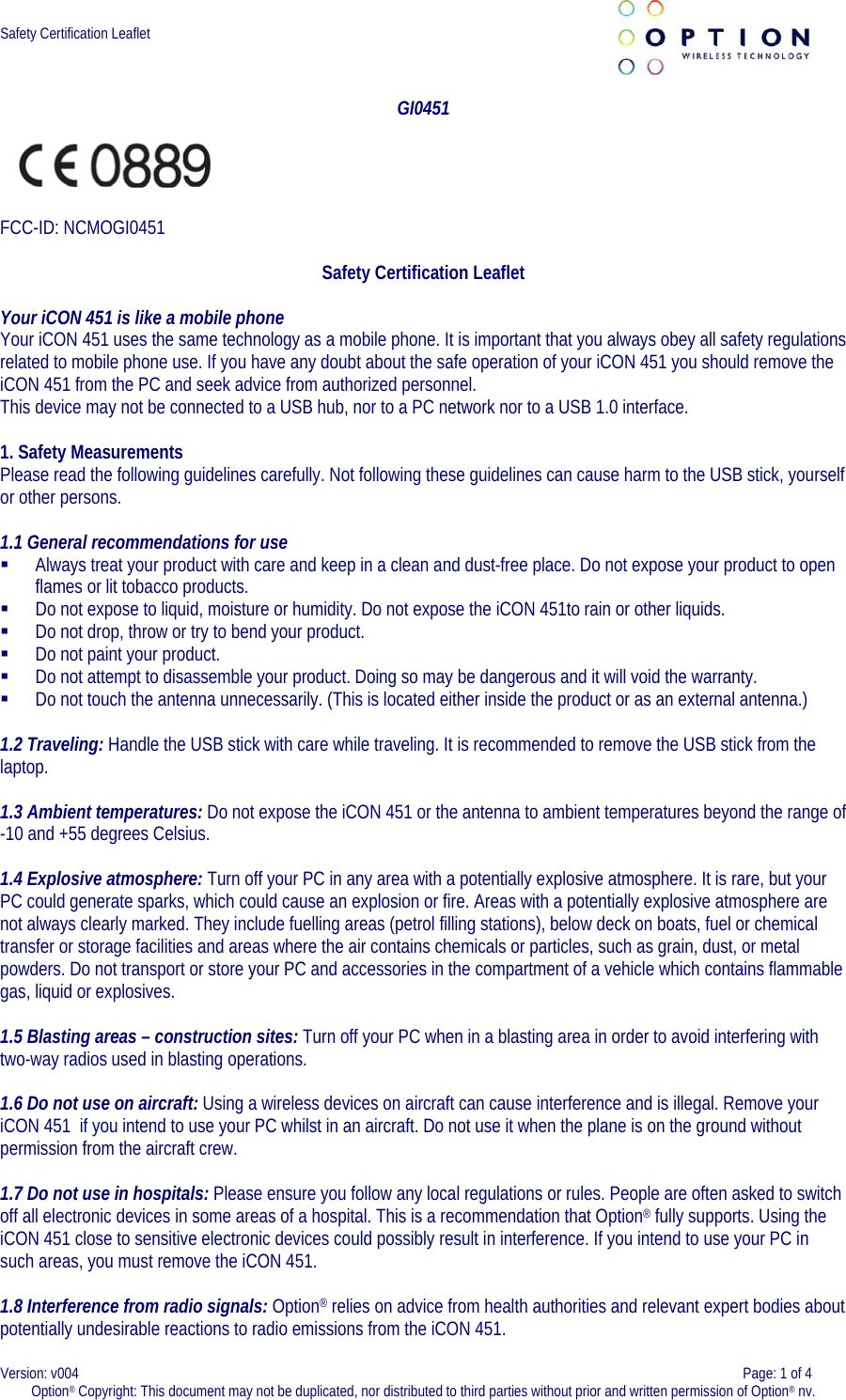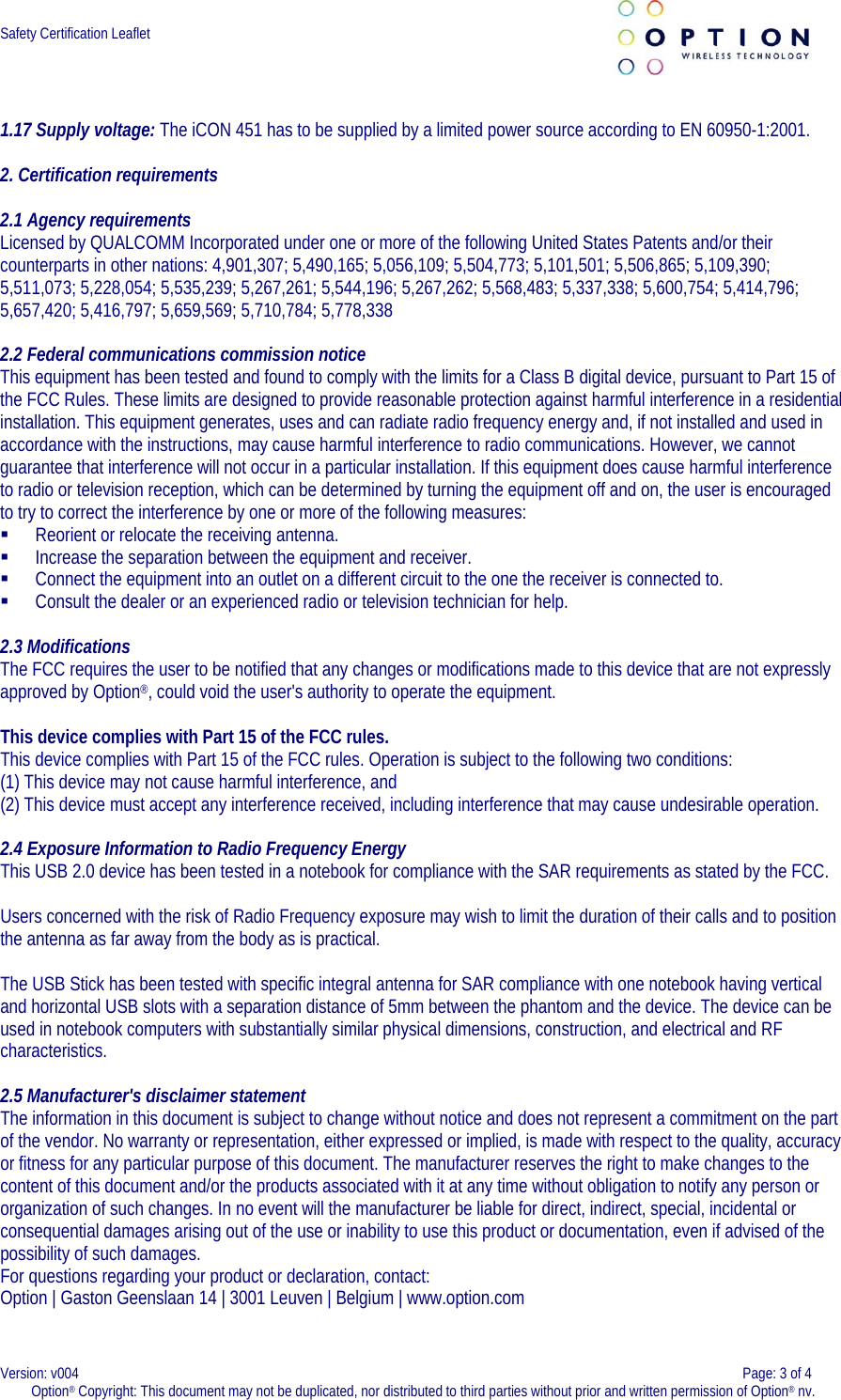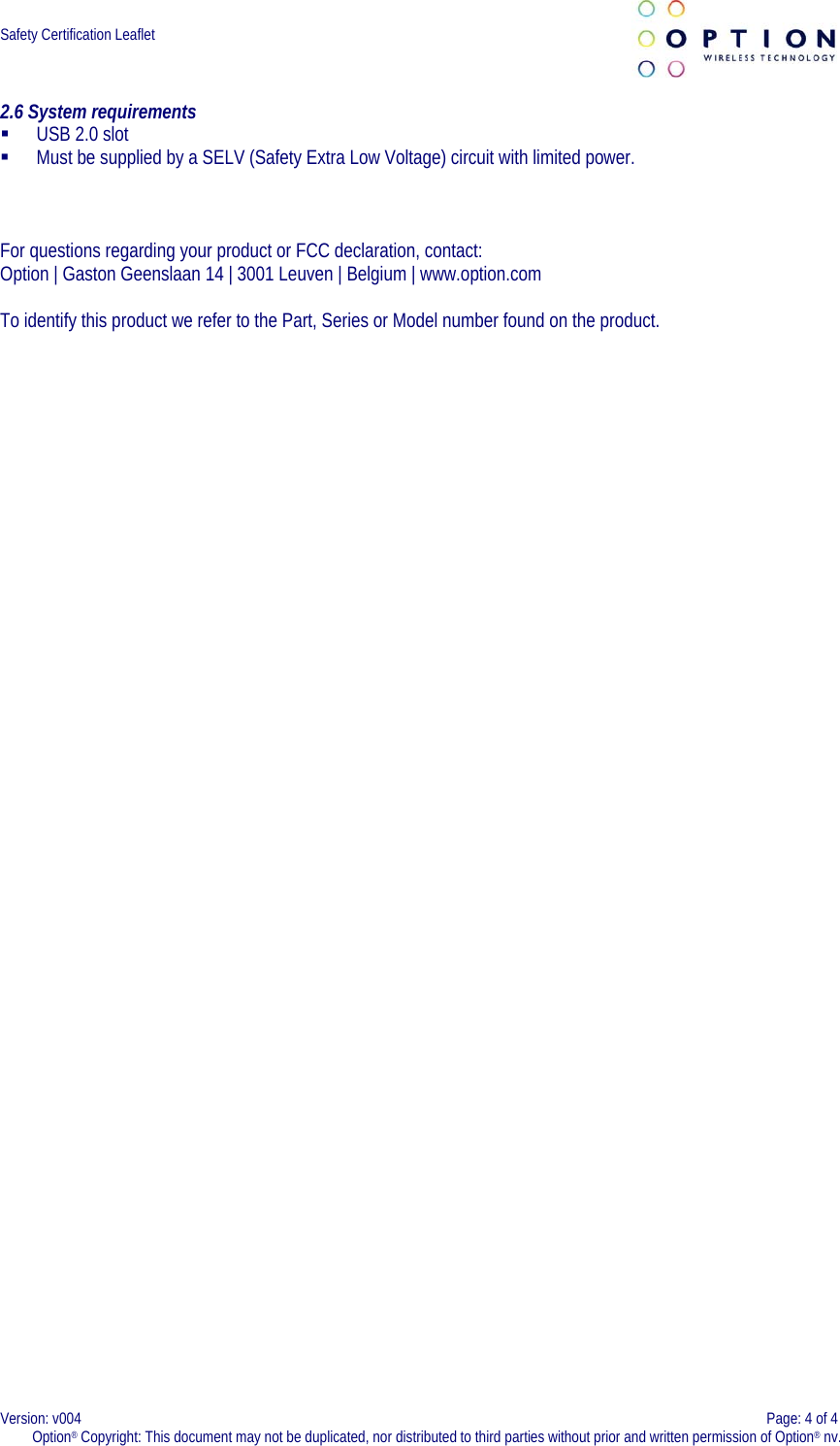Option OGI0451 Quadband GSM/GPRS/EDGE/UMTS/HSDPA/HSUPA USB Modem User Manual Your datacard is like a mobile phone
Option NV Quadband GSM/GPRS/EDGE/UMTS/HSDPA/HSUPA USB Modem Your datacard is like a mobile phone
Option >
Contents
- 1. User Manual 1
- 2. User Manual 2
User Manual 2

![Safety Certification Leaflet 1.9 Immunity to interference: Electromagnetic interference is the disturbance of the normal operation of a device due to its response to radio signals from an external source. Occasionally, in some situations you may hear short sounds coming from audio equipment such as radio or multimedia PC. However, these audible signals do not interfere with the operation of the equipment. The Directive from the European Commission (2004/108/EC) governing all forms of electronic equipment concerns interference that such equipment produces, and its immunity to interference from outside. Any equipment compliant with that directive is unlikely to suffer interference. All wireless devices may get interference which could affect performance. 1.10 Cardiac pacemakers, implanted defibrillators & other medical implant devices It is possible that the iCON 451 may interfere with some types of pacemakers or implanted defibrillators when operated close to the implanted device. You should seek advice from your doctor that is specific to the implant before using the iCON 451. Health authorities in many countries have set up advisory services for medical devices and implants including providing advice about maintaining separation distance between the mobile device or other radio frequency equipment and the implant. Option® operating companies reflect the advice given by their relevant health authority or national advisory service, and as a minimum recommend a separation distance of at least 20 cm between the iCON 451 or other radio frequency terminal equipment and the embedded device. 1.11 Hearing devices: People with hearing aids or other cochlear implants may experience interfering noises when using mobile devices or when one is nearby. The level of interference will depend on the type of mobile device, the type of hearing device and the distance between the two. Increasing the distance between the iCON 451 and hearing device may reduce interference. 1.12 Children: Do not allow children to play with your iCON 451. They could hurt themselves or others, or could accidentally damage the iCON 451. Your iCON 451 contains small parts with sharp edges that may cause an injury or which could become detached and create a choking hazard. 1.13 Driving: Do NOT use the iCON 451 while driving. Park the vehicle first. 1.14 SIM cards: To protect against damage from electrostatic discharge (ESD) do not touch the SIM card connectors. As a precaution, always make sure that iCON 451 is already in your hand before you insert or remove the SIM card. 1.15 Accessories: Only use Option® approved accessories. Do not connect with incompatible products. When used with accessories, Option® can only guarantee safe and correct operation of our products if the accessories are tested and approved by us. 1.16 Safe distance: The iCON 451 has been thoroughly tested to comply with SAR requirements. These tests simulate the absorption by the human body of radiation from the iCON 451. This device complies to the SAR regulation as stated by the FCC. The measurements were made according to the Supplement C to OET Bulletin 65 of the Federal Communications Commission (FCC) Guidelines [OET 65] for evaluating compliance of mobile and portable devices with FCC limits for human exposure (general population) to radiofrequency emissions. The device was tested in all applicable USB orientations with a separation of 5 mm to the flat phantom. The FCC guidelines define a limit of 1.2 W/kg averaged over a mass of 1 g for single platform devices, in this case a notebook platform. This device complies with the SAR regulation as stated by the European Council Recommendation. The SAR limit as defined by the European Council Recommendation is 2.0 W/kg for a mass of 10g (European Council Recommendation 1999 519 EC), based upon ICNIRP guidelines. Details are available upon request. For day-to-day use we would advise the user to keep a minimum distance from the antenna of 20 cm. Users concerned with the risk of Radio Frequency exposure may wish to limit the duration of their calls and to position the antenna as far away from the body as is practical. Version: v004 Page: 2 of 4 Option® Copyright: This document may not be duplicated, nor distributed to third parties without prior and written permission of Option® nv.](https://usermanual.wiki/Option/OGI0451.User-Manual-2/User-Guide-1103416-Page-2.png)

